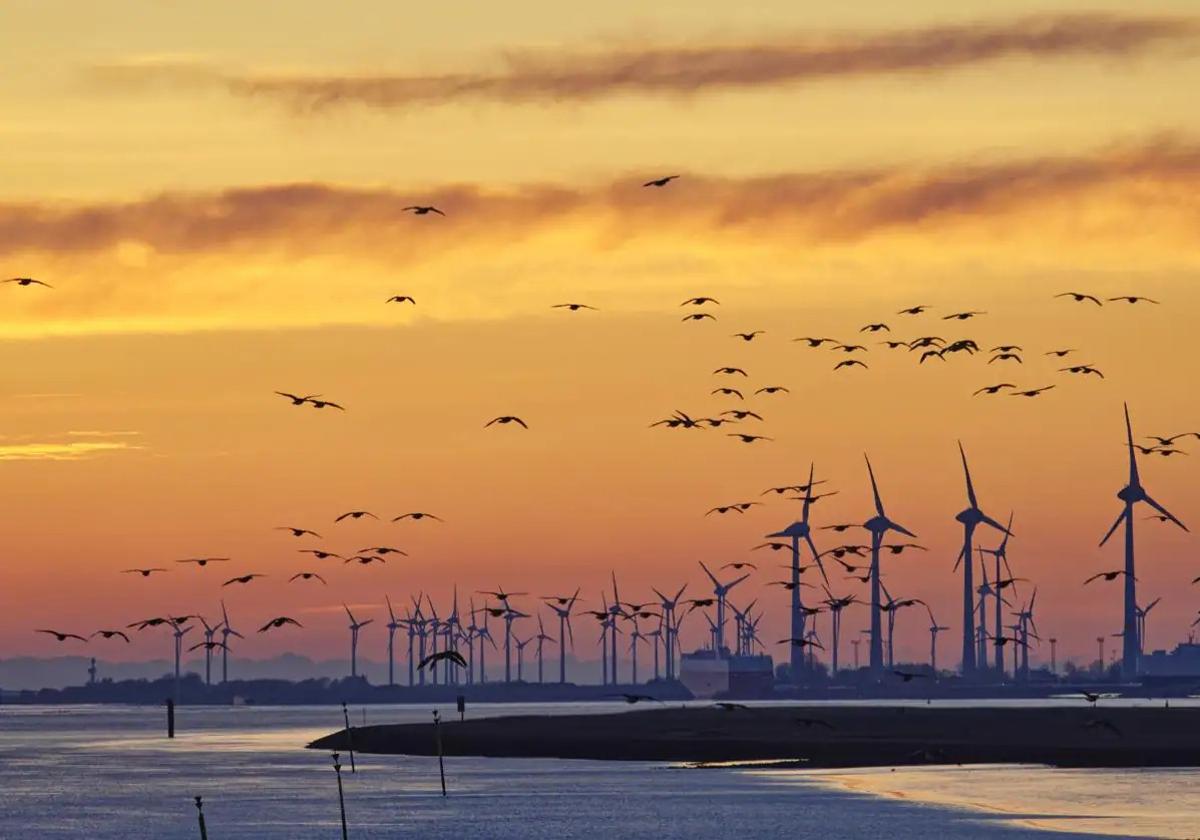The Spanish artificial intelligence that protects birds from wind farms
Almost 10,000 birds have died as a result of impacts with wind turbine blades in Spain
Energy transition or biodiversity protection? Advancing green technologies or slowing their expansion? These are some of the questions that many people have begun to ask themselves which environmentalists are forced to confront. Solar farms are gaining hectares of land on mainland Spain and wind turbines are towering over the landscape. Two sides of the same coin in which, on the one hand, Spain beat its record for renewable energy generation and, on the other, almost 10,000 birds have died as a result of impacts with wind turbine blades.
These installations, both solar and wind, are located in nature, with animals often the most affected. However, before their installation, each project must include an environmental impact statement and be approved by authorities.
A study carried out by SEO-Birdlife puts the number of birds killed as a result of collisions, either with wind turbines (6,058) or with power lines (50,968) at 57,026, in addition to another 14,007 killed by electrocution between 2008 and 2018. Other research, such as that of the Doñana Biological Station (EBD) and the Spanish National Research Council (CSIC), found that in Spain between two and four million animals, such as birds and bats, are killed by windmills. "We are aware that there is a clear environmental impact," said Daniel García Manteiga, head of product and business development for telco and media at Minsait.
To minimise this risk, the Indra subsidiary has developed a system that combines artificial intelligence with bird recognition algorithms for application in wind farms. "We have really combined several technologies that we already had and they allow us to make decisions to minimise the impact on these farms," he pointed out.
However, this project, developed through the Next Generation funds and with the participation of the CDTI (Centre for Technological Development and Innovation), is based on two key technologies: artificial intelligence and real-time video analysis. With a 3D radar, they capture any type of animal within a five-kilometre radius and a camera system monitors the passage of these animals at all times. "We have been working with these tools for several years," García Manteiga said. "A year ago we incorporated artificial intelligence," he added.
With this latest addition, the solution avoids human intervention and turns this security system capable of preventing bird strikes on wind turbine blades. "The algorithms calculate the probability of impact and, if positive, a command is given to automatically stop the corresponding wind turbines," García Manteiga said.
Individualised surveillance
"We are in several locations on mainland Spain, but out of respect for our customers I cannot say where," said García Manteiga. Minsait's protection system works for multiple wind turbines. Depending on the size of the installation, one or two 3D radars are placed, even though one may be enough. When this technology detects presence of an animal, the cameras automatically focus on its location. It is at this point artificial intelligence begins to do its work to detect what type of species is approaching. "All this is done in real time," said the Spanish company's spokesperson. "This has also been a challenge, because on many occasions these wind farms are in remote areas where there is no good connection," he warned. Together with Red Hat, a US company that provides open source software mainly to companies, and 5G connectivity, they have managed to overcome this obstacle.
"We calculate the probability of impact by trying to predict the trajectory of the bird," García Manteiga said. "If there is danger, we first emit a series of acoustic signals to divert these animals from their trajectory, and if this is not achieved, we send commands to the wind turbines to reduce their speed or even stop them," he added.
The protection system is also trained to detect especially vulnerable species such as Egyptian vultures or the lesser kestrel in some areas of Spain. In these cases, the wind turbines, once the bird has been identified, go into technical shutdown to avoid collisions and create a safe way of passage. "These accidents have an environmental impact as well as an economic one for the companies," García Manteiga said.
Penalties are included the country's natural heritage and biodiversity laws, which stipulates there are financial penalties for the death of endangered species if the company has failed to act. In addition, the environmental assessment law, also establishes that if, once the company has been informed, it fails to implement protective measures, it may incur an infringement which carries penalties that can be criminal in the most serious cases.

